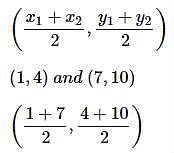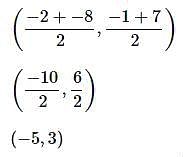CUET Commerce Exam > CUET Commerce Tests > General Test Preparation for CUET > Test: Linear Equations- 2 - CUET Commerce MCQ
Test: Linear Equations- 2 - CUET Commerce MCQ
Test Description
15 Questions MCQ Test General Test Preparation for CUET - Test: Linear Equations- 2
Test: Linear Equations- 2 for CUET Commerce 2024 is part of General Test Preparation for CUET preparation. The Test: Linear Equations- 2 questions and answers have been
prepared according to the CUET Commerce exam syllabus.The Test: Linear Equations- 2 MCQs are made for CUET Commerce 2024 Exam. Find important
definitions, questions, notes, meanings, examples, exercises, MCQs and online tests for Test: Linear Equations- 2 below.
Solutions of Test: Linear Equations- 2 questions in English are available as part of our General Test Preparation for CUET for CUET Commerce & Test: Linear Equations- 2 solutions in
Hindi for General Test Preparation for CUET course. Download more important topics, notes, lectures and mock
test series for CUET Commerce Exam by signing up for free. Attempt Test: Linear Equations- 2 | 15 questions in 15 minutes | Mock test for CUET Commerce preparation | Free important questions MCQ to study General Test Preparation for CUET for CUET Commerce Exam | Download free PDF with solutions
Test: Linear Equations- 2 - Question 1
For what value of N would the following equation have no solution?
3(4x−7)+12=2(5x−3)+N(x−3)
Detailed Solution for Test: Linear Equations- 2 - Question 1
Detailed Solution for Test: Linear Equations- 2 - Question 2
| 1 Crore+ students have signed up on EduRev. Have you? Download the App |
Detailed Solution for Test: Linear Equations- 2 - Question 3
Detailed Solution for Test: Linear Equations- 2 - Question 4
Detailed Solution for Test: Linear Equations- 2 - Question 5
Detailed Solution for Test: Linear Equations- 2 - Question 6
Detailed Solution for Test: Linear Equations- 2 - Question 7
Detailed Solution for Test: Linear Equations- 2 - Question 8
Detailed Solution for Test: Linear Equations- 2 - Question 9
Detailed Solution for Test: Linear Equations- 2 - Question 10
Test: Linear Equations- 2 - Question 11
Which of the following equations has the set of all real numbers as its solution set?
Detailed Solution for Test: Linear Equations- 2 - Question 11
Test: Linear Equations- 2 - Question 12
Consider the incomplete equation

What number replaces the box in order to form an equation with no solution?
Detailed Solution for Test: Linear Equations- 2 - Question 12
Test: Linear Equations- 2 - Question 13
Consider the incomplete equation
Which of the following numbers can replace the box to form an equation whose one and only solution is 2?
Detailed Solution for Test: Linear Equations- 2 - Question 13
Detailed Solution for Test: Linear Equations- 2 - Question 14
Test: Linear Equations- 2 - Question 15
Define a function f as follows:
f(x)=8x−35
If f(N)=47, evaluate N.
Detailed Solution for Test: Linear Equations- 2 - Question 15
|
154 videos|396 docs|723 tests
|
Information about Test: Linear Equations- 2 Page
In this test you can find the Exam questions for Test: Linear Equations- 2 solved & explained in the simplest way possible.
Besides giving Questions and answers for Test: Linear Equations- 2, EduRev gives you an ample number of Online tests for practice
|
154 videos|396 docs|723 tests
|
Download as PDF






























